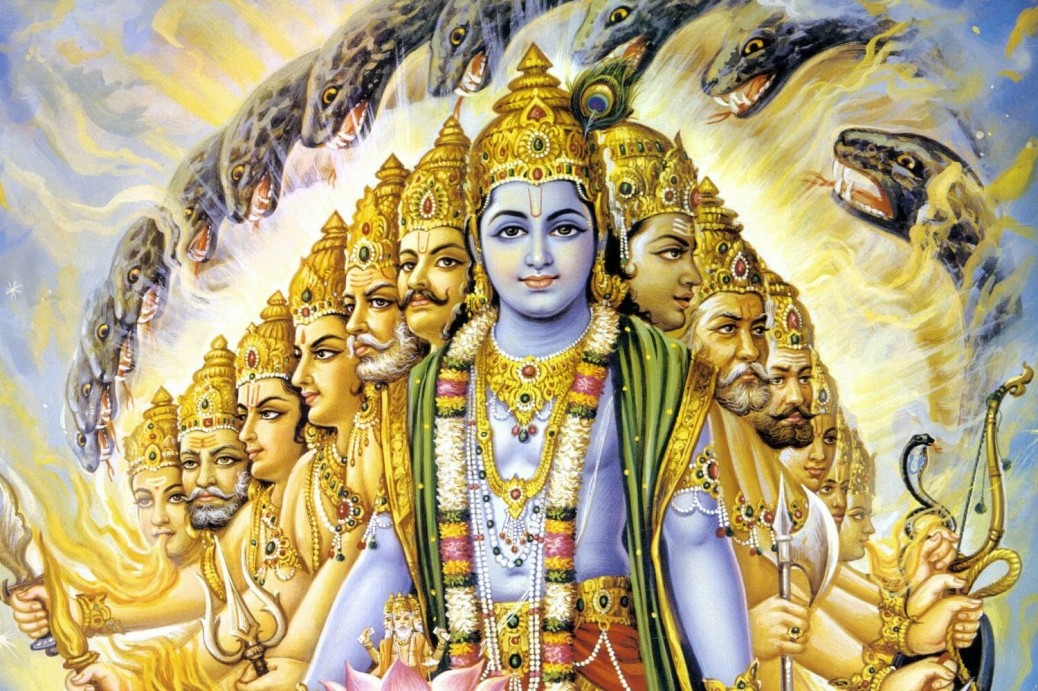The Absolute Truth – In Gita Verse 17.26-27 The Absolute Truth is the objective of devotional sacrifice, and it is indicated by the word sat. The performer of such sacrifice is also called sat, as are all works of sacrifice, penance and charity which, true to the absolute nature, are performed to please the Supreme Person, O son of Pṛthā.
In the Bhagavad Gita Verse 17.26-27, expounds on profound truths about the Absolute, emphasising the eternal nature and omnipresence of God. The term “Sat” is utilised to symbolise the essence of truth and superiority in connection to devotion and sacrifice. This connotes that offerings made with the intention of pleasing the Supreme are considered “Sat” and mirror the absolute nature of God.
Sat signifies that which IS. The transitory nature of worldly existence contrasts with the eternal essence of God. This comparison underscores the notion that while everything in the material world is subject to change and impermanence, the essence of God remains eternal and unchanging.
Scientists suggest that when the Aryans arrived in India approximately thirty to thirty-five thousand years ago, the Himalayas did not exist. The Himalayas later emerged and are currently in the process of geological formation. This ongoing growth and transformation make the Himalayas akin to a child – immense in size, continually increasing in height by about four inches every year, and displaying signs of youth and development.
In contrast, the Vindhyachal mountain range is considered one of the oldest geological formations. Its hunched appearance symbolises antiquity, with the land surrounding Vindhyachal being among the oldest on the planet. The Narmada River flows through this ancient land, which is believed to have surfaced first from the ocean, emphasising the profound history and primordial nature of this region.
By comparing mountains like the Himalayas and Vindhyachal to the eternal essence of God highlights the transient nature of physical landscapes in contrast to the timeless and unchanging presence of the divine. While mountains can be formed and eroded over time, the essence of God remains eternal and steadfast, unaffected by the passing of epochs.
Drawing a parallel between the geological evolution of mountains and the concept of being-ness attributed to God, it underscores the idea that while our worldly existence is temporary and subject to change, the essence of God represents a continuous and unchanging reality. Just as a bird swiftly enters and exits a room, our temporal existence is fleeting, punctuated by moments of being amidst realms of non-being.
This reflection calls attention to the profound difference between the transient nature of the material world and the eternal essence of God, prompting contemplation on the impermanence of physical phenomena contrasted with the enduring presence of the divine.
Moreover, the concept of Vedanta is explored, which asserts that God is not a distinct entity but rather inherent in all that exists. This perspective challenges traditional beliefs regarding the existence of God and underscores the idea that the divine presence permeates every aspect of creation. By recognising the divine essence in all things, individuals are encouraged to deepen their spiritual connection and cultivate a sense of oneness with the universe.
The verse also delves into the importance of performing good deeds with egolessness, emphasising that actions carried out in alignment with God’s will are deemed virtuous and true. By transcending the ego and acting as instruments for divine expression, individuals can purify their intentions and elevate their actions to a higher spiritual plane.
Krishna emphasises, “The Absolute Truth is in this moment.” The essence of the teachings from the Bhagavad Gita resonates in underscoring the eternal nature of God, highlighting the importance of truth, selflessness, and devotion on one’s spiritual path. By embracing these fundamental principles, individuals can deepen their connection to the divine essence within them and aspire towards spiritual growth and enlightenment.
Krishna in this verse elaborates on the significance of the term “Sat,” used to denote both truth and superiority regarding God, indicating that good deeds performed without ego embody the essence of “Sat.” Actions done selflessly, as instruments of divine will, encompass the essence of goodness, transcending personal motivations and attributing all merit to God’s work through individuals. This unique perspective on good deeds emphasises the importance of egolessness in actions, distinguishing true actions as those aligned with God’s will rather than personal desires. Furthermore, the state of yagya, penance, and charity are regarded as true when performed in the service of God, emphasising the authenticity of actions dedicated to the divine purpose.
Tags: The Absolute Truth




